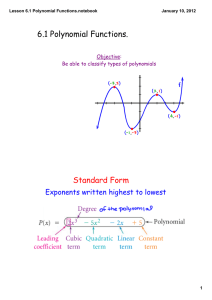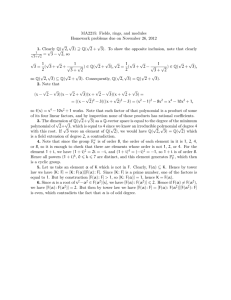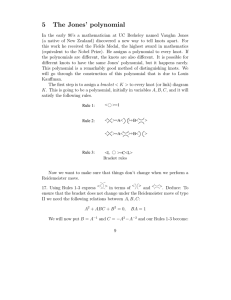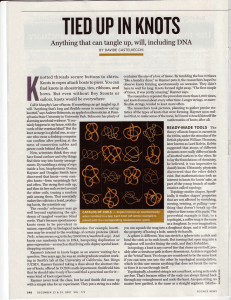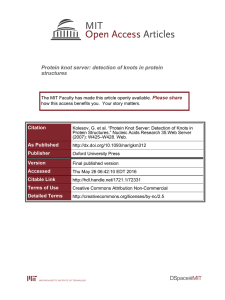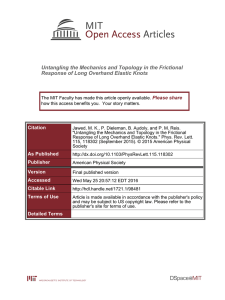The A-polynomials of families of symmetric knots David W. Boyd
advertisement
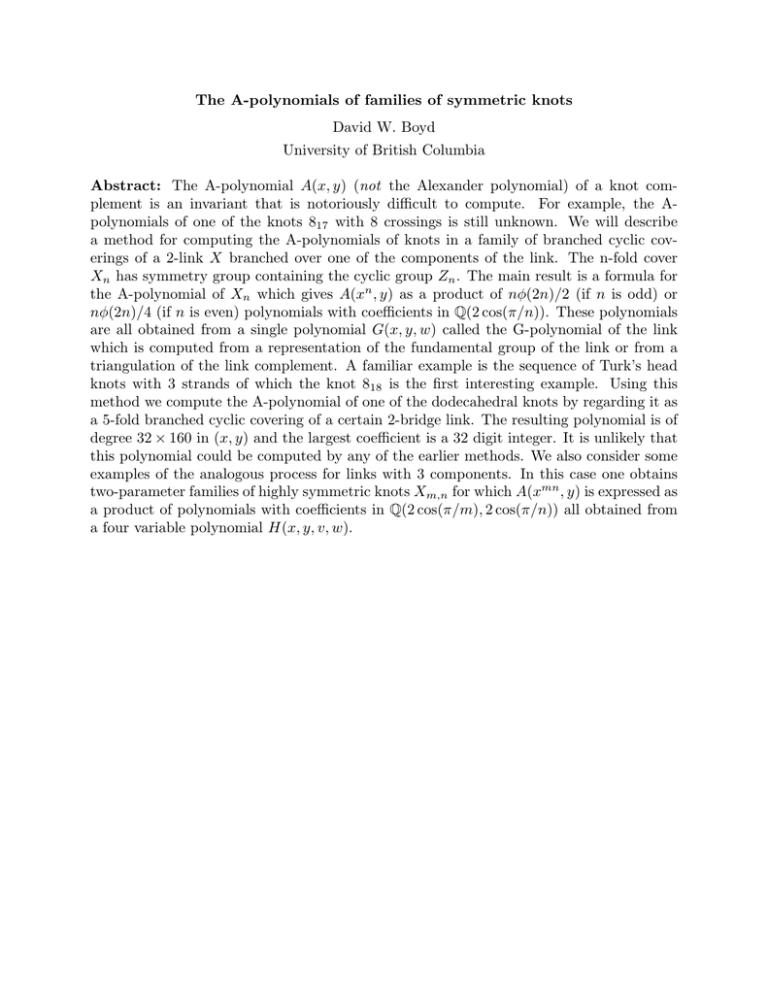
The A-polynomials of families of symmetric knots David W. Boyd University of British Columbia Abstract: The A-polynomial A(x, y) (not the Alexander polynomial) of a knot complement is an invariant that is notoriously difficult to compute. For example, the Apolynomials of one of the knots 817 with 8 crossings is still unknown. We will describe a method for computing the A-polynomials of knots in a family of branched cyclic coverings of a 2-link X branched over one of the components of the link. The n-fold cover Xn has symmetry group containing the cyclic group Zn . The main result is a formula for the A-polynomial of Xn which gives A(xn , y) as a product of nφ(2n)/2 (if n is odd) or nφ(2n)/4 (if n is even) polynomials with coefficients in Q(2 cos(π/n)). These polynomials are all obtained from a single polynomial G(x, y, w) called the G-polynomial of the link which is computed from a representation of the fundamental group of the link or from a triangulation of the link complement. A familiar example is the sequence of Turk’s head knots with 3 strands of which the knot 818 is the first interesting example. Using this method we compute the A-polynomial of one of the dodecahedral knots by regarding it as a 5-fold branched cyclic covering of a certain 2-bridge link. The resulting polynomial is of degree 32 × 160 in (x, y) and the largest coefficient is a 32 digit integer. It is unlikely that this polynomial could be computed by any of the earlier methods. We also consider some examples of the analogous process for links with 3 components. In this case one obtains two-parameter families of highly symmetric knots Xm,n for which A(xmn , y) is expressed as a product of polynomials with coefficients in Q(2 cos(π/m), 2 cos(π/n)) all obtained from a four variable polynomial H(x, y, v, w).


